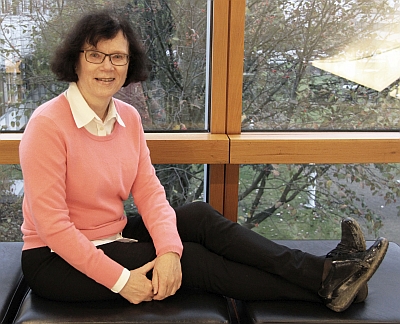Text and photo: Kaisa Järvelä
Study from Tampere Sheds Light on the Lives and Well-being of People Aged over 90
The Vitality 90+ Study research group studies how the oldest residents of Tampere are doing and has collected data on the issue since 1995. The unique data have now been archived at the Finnish Social Science Data Archive.
Everyone wants to know the secrets behind old age. Could the research group that has spent over twenty years studying the lives and wellbeing of people aged over 90 years hold the answers?
'Many expect us to have found some exciting trick to help people live long lives. Unfortunately, such a trick does not exist', Professor of Gerontology Marja Jylhä from the University of Tampere replies.
She affirms that reaching the oldest ages seems to be influenced by the exact same things that affect staying alive at a younger age, too.
'Beneficial factors include at least good functional ability, not having many illnesses and not having smoked. In addition to these, it helps to be female rather than male and belong to the upper rather than lower social classes', Jylhä lists.

Professor Marja Jylhä wants to emphasise that people over 90 are a very heterogeneous group.
The disappointing answer must suffice. If people nearing a hundred years of age had some magic trick up their sleeves, Jylhä would be the person to know about it.
The multidisciplinary Vitality 90+ Study research group has collected data eight times from all residents of Tampere aged over 90 years. The surveys charted their everyday life, functioning and living conditions, as well as the care they receive. The latest survey is from 2014.
The surveys have managed to reach people aged over 90 years with exceptional coverage. Each survey has had a response rate of around 80 %.
Besides extensive postal survey data, the Vitality 90+ Study data include life story interviews collected from the participants. People aged exactly 90 years have also been visited intermittently to examine their functional performance and to collect blood samples.
Around one third lives at home in good health
The study is still actively continuing and even new data may emerge if funding to collect it can be found.
The theme certainly remains important, since the Finnish social and healthcare reform will rearrange services, and the number of Finnish citizens aged over 90 years keeps increasing.
'At the beginning of the 1990s, there were a few thousand people in Finland who had turned 90, whereas now there are around 50,000', Jylhä notes.
Many interesting details concerning the growing population group have already been discovered during these twenty years. Jylhä thinks one of the most important observations is that people aged over 90 years comprise an extremely heterogeneous group.
'Around one third of them live at home in good health, another third lives at home in bad health and slightly over one third is in round-the-clock care', she summarises.
Doctoral students interested in data
It is estimated that nearly 190,000 persons aged over 90 years will be living in Finland in 2060. In other words, a significant proportion of today's working-age people will live to almost one hundred years of age – even if the secret to long life cannot be found.
Instead, the Vitality 90+ Study data will surely continue to provide plenty of interesting information. Jylhä reveals that the data garner constant interest from doctoral researchers, among others. Three doctoral theses based on the data will most likely be completed next year.
Interest is likely to only grow in the near future, as all eight postal survey datasets have been archived at the FSD this autumn. The data are accessible in the FSD's Aila Data Service and may be downloaded for your own use after permission has been asked and obtained from the research team.
